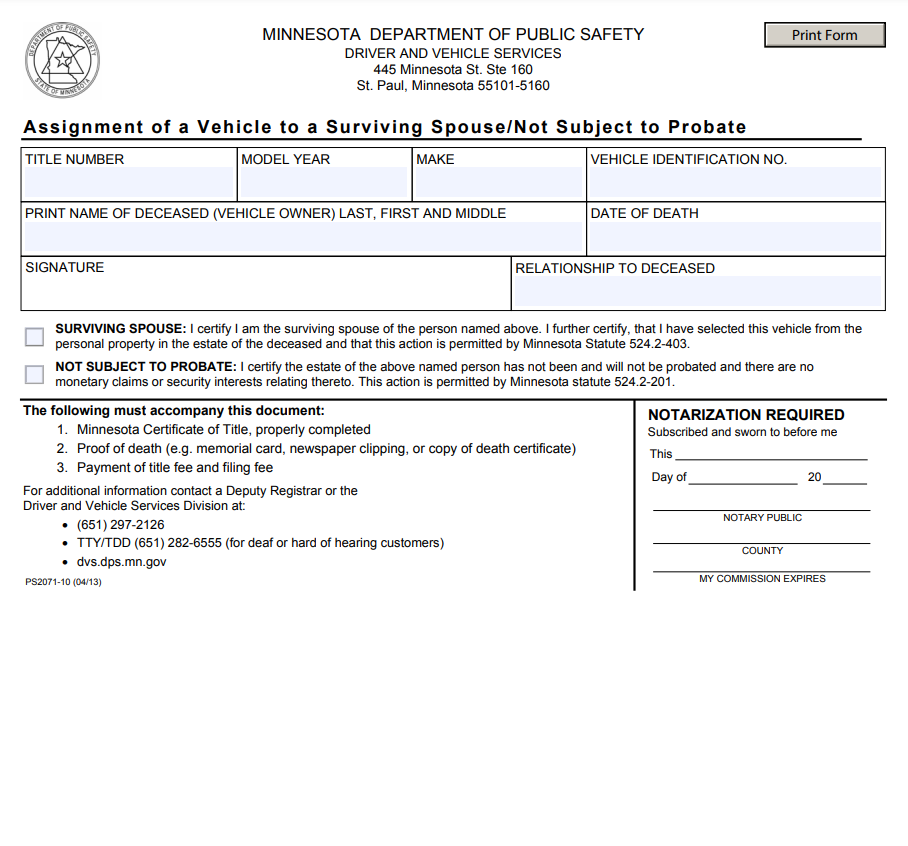Non Probate Affidavit Minnesota – Your desires regarding an estate and the distribution of assets are expressed in a Non Probate AffidAvit Minnesota. It can be utilized for a number of things, including avoiding probate procedures. Non-Probate assets can include joint-tenancy real estate or bank accounts with right of survivorship. Pension benefits assigned to a beneficiary are an example of non-probate assets.
Among the non-probate assets are bank accounts with survivorship rights.
Non-probate assets are those that transfer without going through probate. These assets include life insurance policies, retirement accounts, and bank accounts with TOD or rights-of-survivorship designations. These kinds of assets also go to a selected beneficiary right away.
It’s crucial to comprehend the distinction between assets subject to probate and those that aren’t while choosing the right beneficiary for an estate. A proper last will and testament is required for assets that move through probate court, and they should be regarded as such.
Listing all assets subject to probate is a necessary step in the probate process. Bank accounts are straightforward to value. Appraisals, however, could be necessary for titled goods, such cars and antiques. Whether a property is owned by a single person or as tenants in common is another crucial factor. While the latter has no rights of survivorship, the former enables the surviving spouse to leave a share of the property to the other party.
Property owned as tenants-in-common is another typical asset that passes through the probate court. Prior to the 1980s, this kind of ownership was more prevalent. A portion of that property, however, becomes a probate asset upon the death of a joint owner. The property cannot be distributed in accordance with the decedent’s last will and testament if this occurs.
Real estate held as joint tenants
Two people can own the same property together under a type of ownership known as joint tenancy. Each co-tenant has an equal ownership interest in the property. The rights to the property belong to the surviving joint tenant when one of the joint tenants passes away. For married couples who desire to share ownership of a property but avoid probate, this style of ownership is advantageous.
When joint tenants own property, a non-probate affidavit must be submitted to the county recorder. In the event of the demise of a joint tenant, this paper must be filed. The legal authority for the new owner to sell and transfer title is established by this document.
Another approach to avoid probate in Minnesota is to name the property after children. Additionally, it grants the kids a tiny stake in the land. These fractional interests in a property are considered gifts to children and are frequently significantly bigger than the annual gift tax exclusion level of $15,000 per donee for 2018. This does not imply that these gifts will be tax-free, though.
joint accounts with a bank
If you and your spouse have Minnesota joint bank accounts, you might be able to access these funds without going through the probate process. But you’ll need to provide the financial institution with a signed document as proof of your inheritance rights. A certified copy of the deceased’s death certificate must also be included in the affidavit.
You can also name your spouse as a beneficiary if you and your spouse have a joint bank account. In this way, when you pass away, your accounts’ funds will be automatically transferred to your beneficiaries. Additionally, you have the option to name a beneficiary on your retirement funds or life insurance coverage.
However, not all sorts of property require probate. If you possess real estate in Minnesota, you will still need to file for probate. Real property includes land, houses, and other buildings that are anchored to the surface. You must apply for probate if you jointly possess real estate. If you own real estate, if you pass away before the other owner, the property will transfer to your spouse.
Benefits from a pension with a named recipient
You might be able to transfer the dividend to your spouse’s account without paying taxes if your pension plan permits you to name a beneficiary. The amount that is rolled over in this sort of transfer, known as an eligible rollover distribution, is tax-free. The distribution will be taxed if your spouse is not the recipient, but you can write it off against your estate taxes.
Download Non Probate Affidavit Minnesota Form 2022
